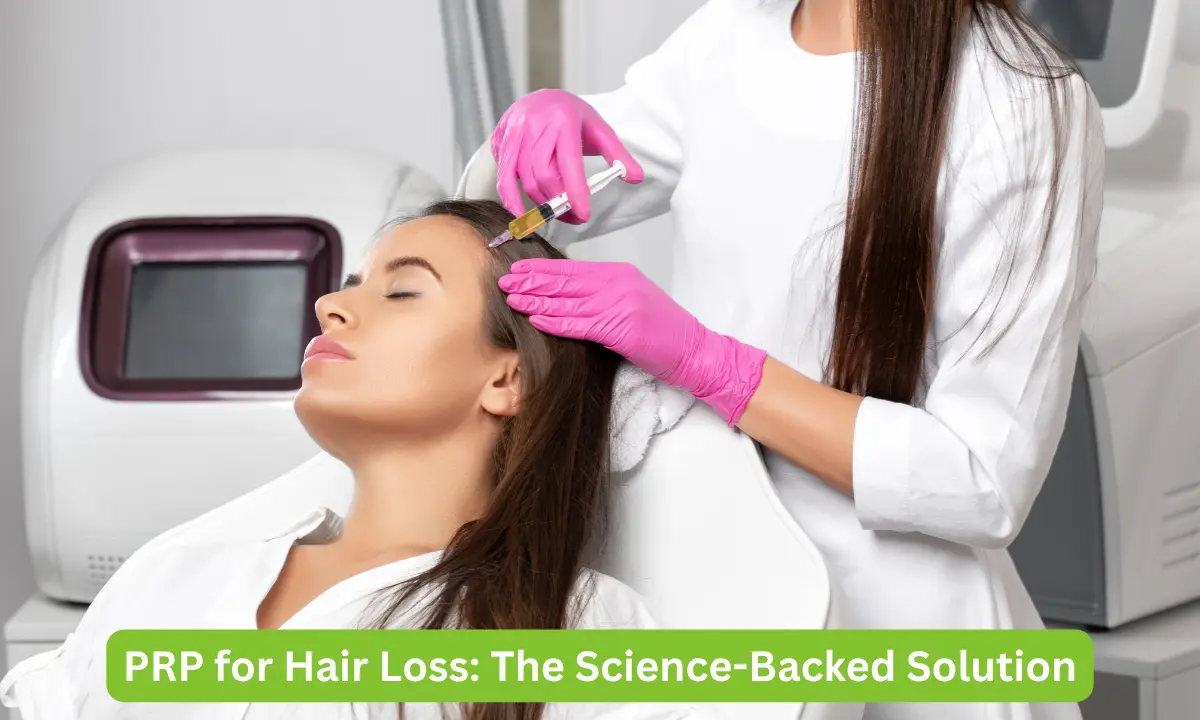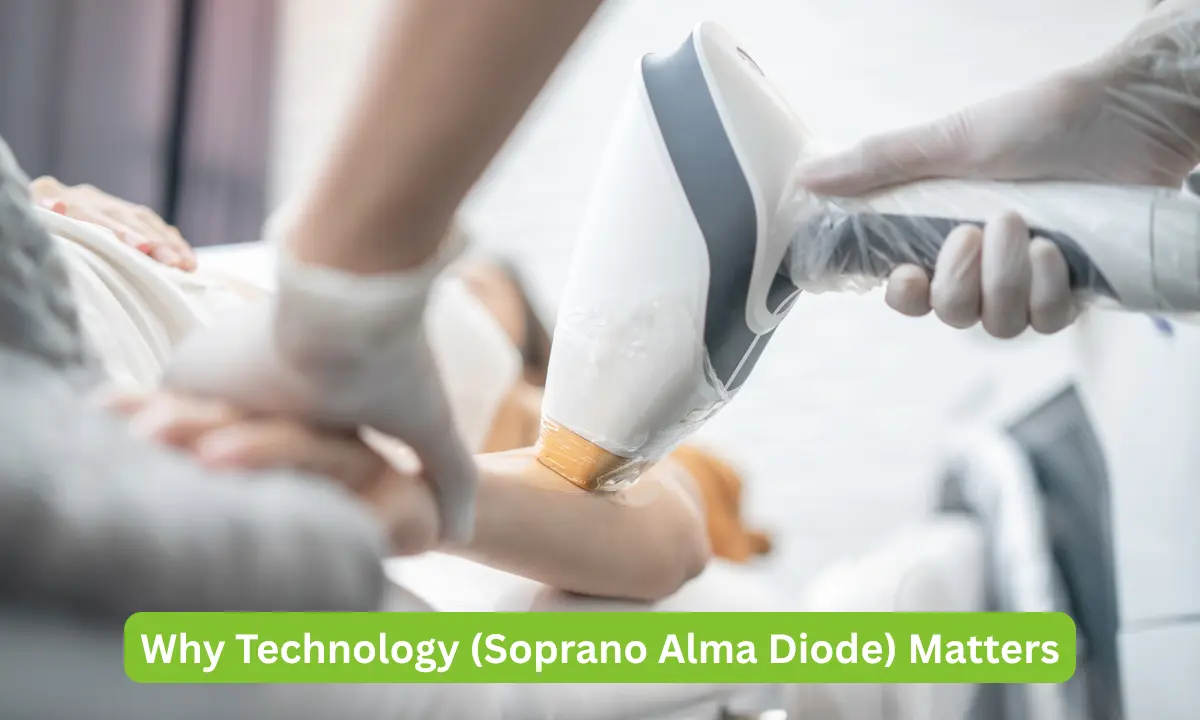
PRP for Hair Loss: The Science-Backed Solution
In the search for a solution, one treatment has gained immense popularity: PRP. However, it’s important to understand how PRP compares to other hair restoration options. Discover more in our guide on which hair loss treatment is right for you.
You’ve likely heard it mentioned, but what is it? Is it just a trend, or is there real science to back it up? As a medical institute, we believe in analyzing the evidence.
Let’s break down the science, the process, and the realistic results you can expect from Platelet-Rich Plasma (PRP) therapy for hair loss.
Table of Contents
What is PRP Therapy?
PRP stands for Platelet-Rich Plasma. At its core, it is a regenerative treatment that uses the healing power of your own blood to stimulate hair follicles.
The entire process is simple, safe, and done in three medical steps:
The Blood DrawA small amount of your blood is drawn, just like a standard blood test.
The CentrifugeThis blood sample is placed in a centrifuge, which separates the “platelet-rich plasma” (the liquid gold).
The InjectionThis highly concentrated plasma is meticulously injected back into your scalp, where hair is thinning.
Learn more about the broader medical applications of Platelet-Rich Plasma (PRP) Therapy beyond hair restoration.
The Science: How Does PRP *Actually* Work for Hair Loss?
PRP is not a “magic” solution; it’s a biological one. Platelets in your blood are your body’s first responders in healing. When you get a cut, platelets rush to the site to stop the bleeding and begin the repair process.
PRP harnesses this same power. When this concentrated plasma is injected into the scalp, it releases a symphony of potent growth factors, including:
Platelet-Derived Growth Factor (PDGF)Stimulates cell growth, blood vessel formation, and tissue repair.
Vascular Endothelial Growth Factor (VEGF)Encourages new blood vessel formation, boosting oxygen and nutrient delivery to follicles.
Epidermal Growth Factor (EGF)Supports cell regeneration and helps revive weakened or miniaturized follicles.
These regenerative proteins are also key components in other advanced cellular therapies, such as Growth Factor Stem Cell Therapy, which similarly harnesses the body’s natural healing mechanisms.
These growth factors work together to:
Increase Blood SupplyThey stimulate the formation of new blood vessels, a biological process known as angiogenesis, which improves oxygen and nutrient delivery to the scalp.
Awaken Dormant FolliclesThey “wake up” hair follicles that have entered a resting phase, pushing them back into the active growth phase.
Strengthen Existing HairThey can increase the thickness and strength of the hair shaft, leading to fuller, healthier-looking hair.
Reduce InflammationThey help reduce inflammation around the hair follicle, which can contribute to hair loss.
Analyzing the Results: Does It *Really* Work?
This is the most important question. The overwhelming scientific consensus is yes, PRP is an effective treatment for hair loss, particularly for androgenetic alopecia (male and female pattern baldness).
Multiple systematic reviews and clinical studies have shown:
Significant Increase in Hair DensityMost studies report noticeable improvement in hair count and density within 3–6 months of consistent PRP sessions.
Thicker, Stronger Hair StrandsPRP often leads to increased hair shaft diameter, making the hair look fuller and healthier.
Reduced Hair SheddingPatients often notice an apparent reduction in daily hair shedding within the first few sessions.
However, it’s crucial to set realistic expectations.
Who is the Ideal Candidate for PRP?
PRP is not a miracle cure for everyone. It works best on dormant follicles, not dead ones. You are an ideal candidate if:
Early to Moderate Hair ThinningPRP works best when thinning has just begun or is progressing but not yet complete.
Presence of Active or Dormant FolliclesEven weak, miniaturized hair indicates the follicles are still alive and can respond to PRP.
Androgenetic Alopecia (Pattern Baldness)This is the condition most scientifically proven to respond well to PRP.
Good Overall HealthIndividuals without healing-related medical issues (like uncontrolled diabetes or certain autoimmune disorders) tend to see better results.
It is generally less effective for individuals who have been completely bald in an area for many years, as the follicles in that area may no longer be viable.
What to Expect from Your Treatment
Minimal DowntimeYou can return to normal activities immediately, as PRP is a non-surgical, low-recovery procedure.
Gradual, Noticeable ImprovementMost people start seeing reduced shedding within weeks and visible thickening within 2–3 months.
Multiple Sessions for Best ResultsPRP is typically done in 3–4 sessions spaced a month apart, followed by maintenance treatments every 6–12 months.
The IRM Difference: Why Your Clinic Choice is Critical
The success of your PRP treatment is not just in the “plasma,” it’s in the preparation and the practitioner. Not all PRP is created equal. The quality of the centrifuge, the precise preparation protocol, and the injection technique all determine the final platelet concentration and, therefore, the results.
Medically Supervised
Performed in a hospital-grade environment by qualified experts who understand the science of hair loss.
High-Quality
We use advanced equipment to ensure we are injecting the highest, most effective concentration of growth factors.
Holistic
We may combine PRP with holistic IV Nutrition therapies to support healthy hair growth from the inside out.
A Viable, Science-Backed Solution
PRP is far from a fad. It is a safe, effective, and scientifically backed medical treatment that harnesses your body’s regenerative power to combat hair loss. For the right candidate, it offers a powerful, non-surgical way to restore hair density, improve thickness, and regain confidence.
If you are tired of seeing more hair in your brush and are ready for a solution that works, your first step is a professional assessment.PRP is one of several advanced aesthetic treatments we offer to rejuvenate and restore from within.
Our medical director, Dr. Salman Gilani, continues to pioneer regenerative therapies that reshape the future of medicine.










